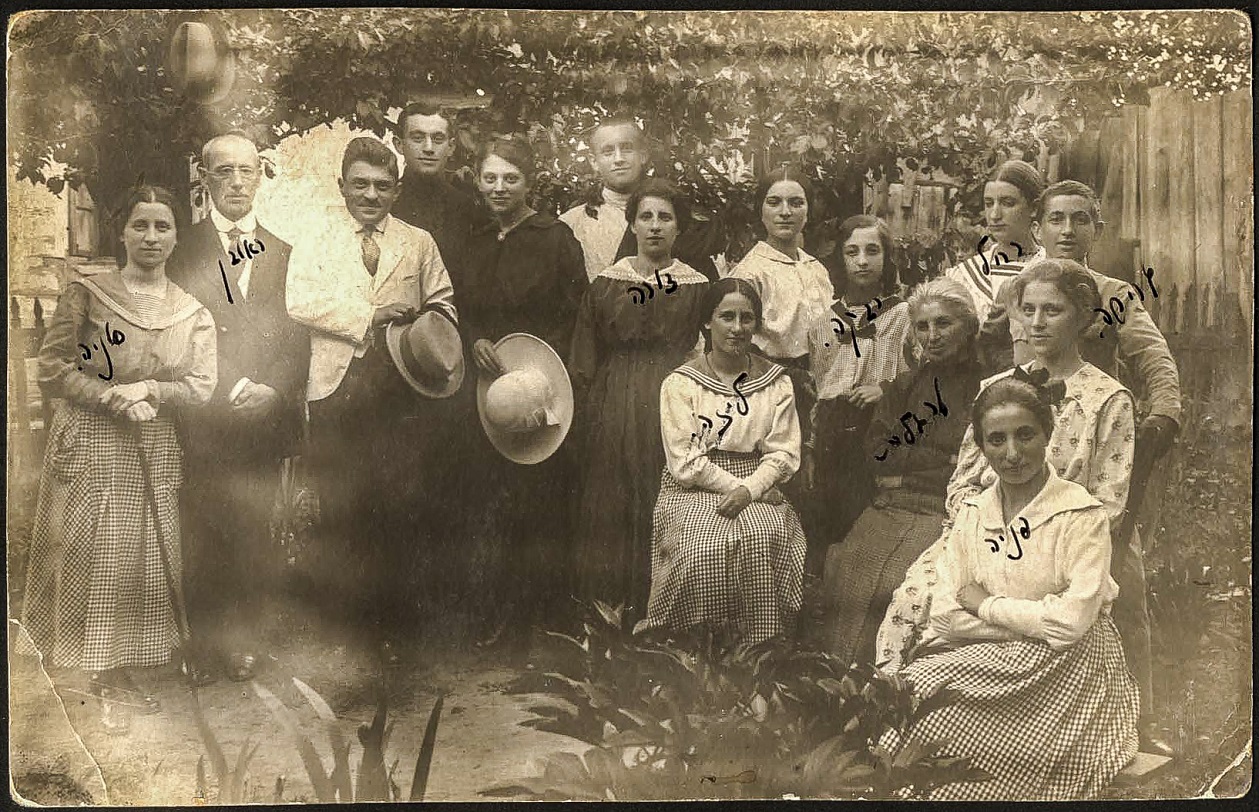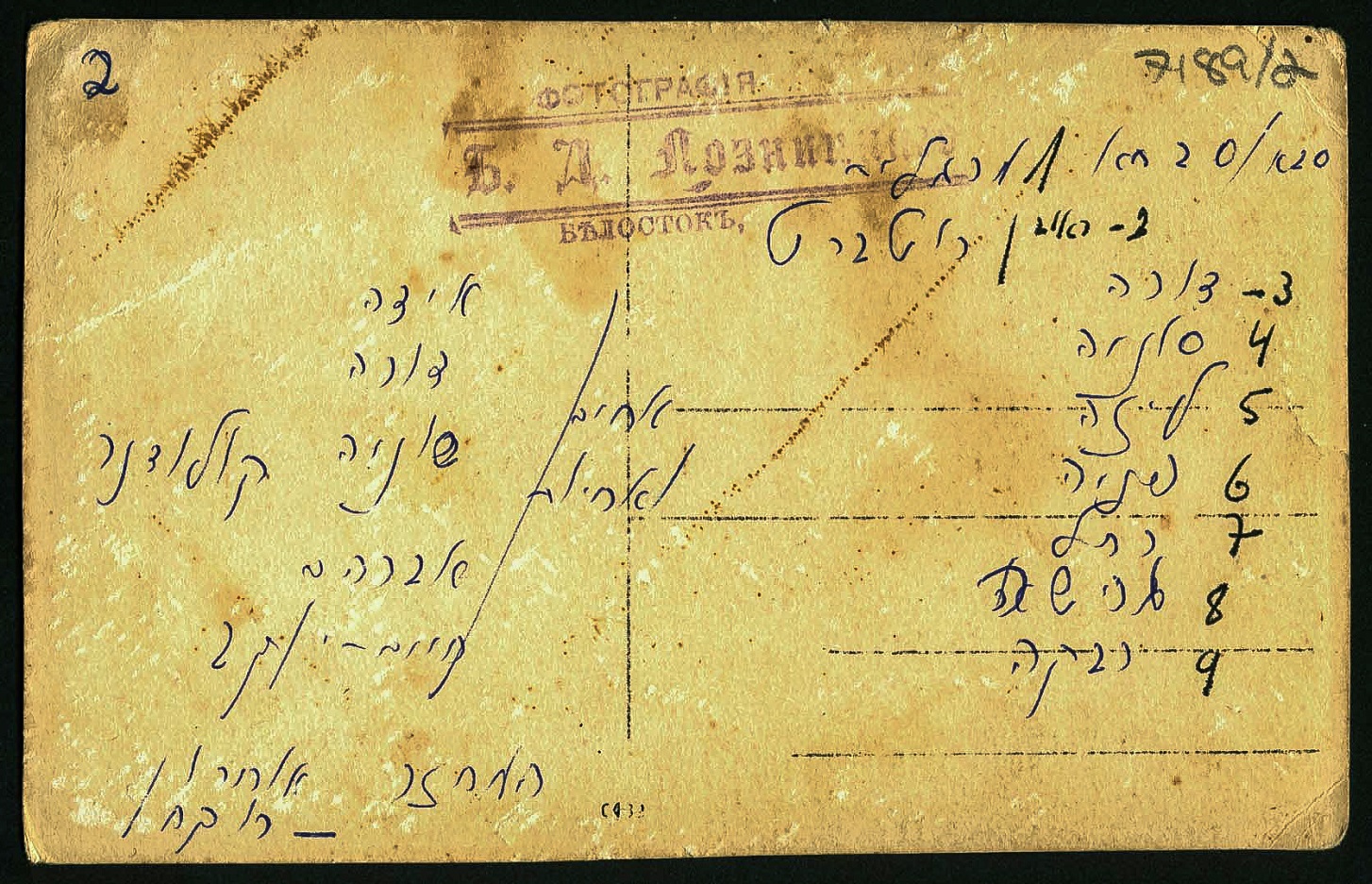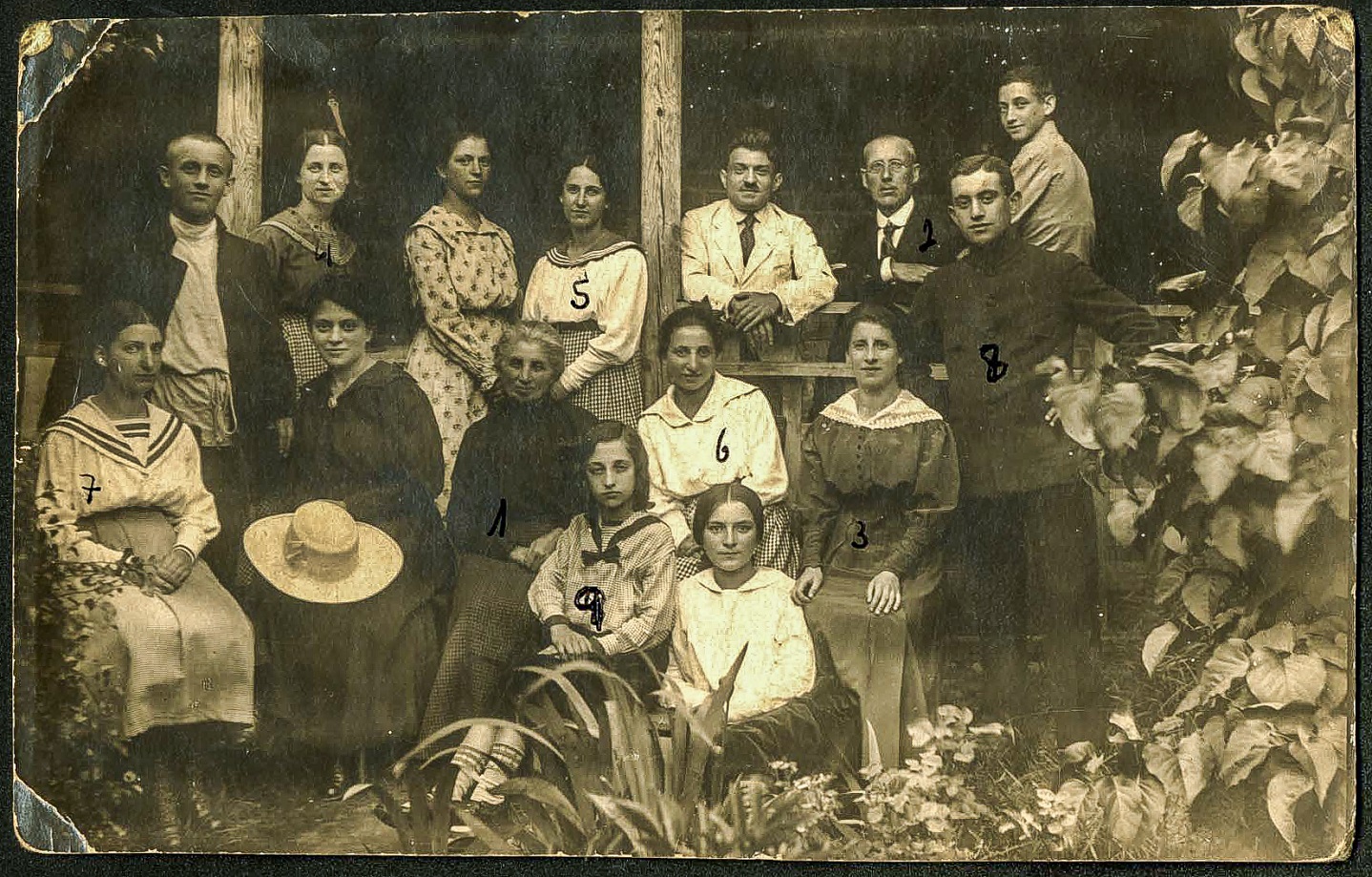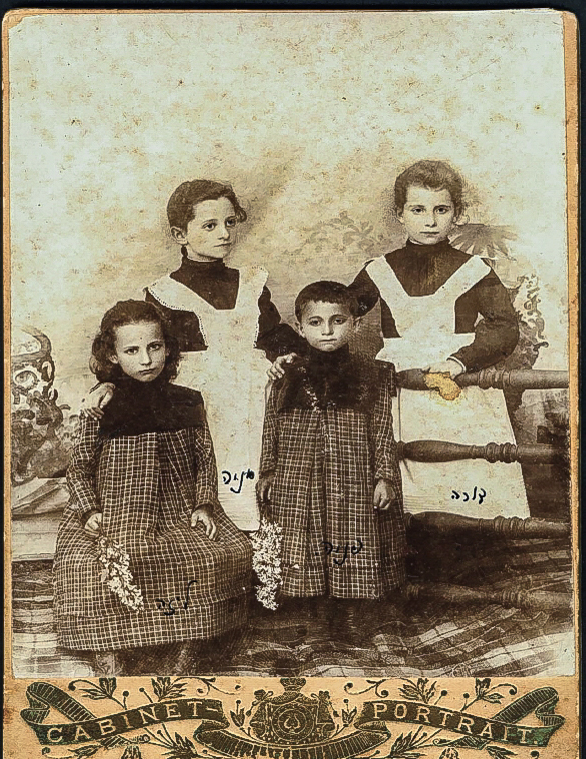Zobacz stare Krynki w kolorze




Krynki - Rotbart, Kolodner, Margolit family
Yad Vashem Archive
Card 2 (written in Hebrew, I cannot read everything, everyone from 1)
-9) seems to be Rotbart Family)
- Margolit (Margolis) Rotbart
- Ruven Rotbart and their children:
- Dore (Dorah)
- Sonye (Sonia)
- Libe (Liba)
- Fanye (Fania)
- Rokhl (Rachel)
- Grisha?
- Rivke (Rebekah)
Yad Vashem Card:
from left to right:
Libe (Libah), Anye (Anja), Fanye (Faniah), Dore
(Dorah).


Bialystok photo atelier
Loznicki


More about Fania Rotbart, from Yad
Vashem
https://www.yadvashem.org/artifacts/featured/fania-rotbart.html
FaniaRotbart
was born in 1899 in Krynki, Poland, the fourth of Margalit (Margolit) and Reuven Rotbart`s seven
children. Margalit was the scion of a rabbinic family from Bialystok, and Reuven was head of
the Krynki Jewish community for many years.
Fania and her siblings all
received a good education, and she studied Hebrew, German and Russian. During World War I,
Fania worked as a teacher. Her parents immigrated to Eretz Israel (Mandatory Palestine) in
1926.
In the the mid-1920s, Fania joined her relative, Nahum Zemach,
founder of the "Habimah" theater, and travelled to Warsaw, Moscow, Vienna and Berlin with him,
taking care of organizational matters.
In 1926, Fania left the theater and
started working as a journalist in Berlin. Her acquaintances from that period included
Beilinson, Shazar and Arlozorov. Influenced by Leo Baeck, she began to study in the the
Rabbinical Seminary where he taught. On graduating, she became one of the first women to earn
the title "Rabbi". While she lived a secular life, Fania was very knowledgeable and maintained
a fine collection of Jewish books.
In 1938, Fania visited Eretz Israel with
a view to preparing for her immigration and joining the rest of her family. She was offered a
job at the "Davar" newspaper, and returned to Berlin to bring her private archive and put her
affairs in order. However, the war broke out, and her family lost contact with her in
1942. In 1943, Fania was deported to the Auschwitz-Birkenau death camp and
murdered.
In a letter that Fania`s sister, Liza Tuviyahu Rotbart, sent
after the war, she describes her painful realization that her sister was probably murdered in the
Holocaust:
"5.6.1945… I went to see an acquaintance of Fania`s who had
arrived from Italy. She was there for some five years. Of course, she knows nothing
about her. She just wanted to give me Fania`s books, precious books that she looked after so
that we would have something to remember Fania by. I returned home crushed and broken, as the
last remaining spark of hope had been extinguished."
In 1946, Liza received
a message from the Trieste port in Italy, that for the past 5-6 years, a container (lift) with
Fania`s library had been waiting for her. Fania`s unusual and valuable collection of books was
donated to the Hebrew University National Library.
Yad Vashem Artifacts
Collection
Donated by Rina Dotan, Moshav Yarkona,
Israel
Thanks to
Beate Schützmann-Krebs
2024-01-21 05:37:40 history
jedyny ocalony - czerwiec 1941
2019-04-11 11:18:30
1941-1942, getto, szpital, Judenrat
2019-04-17 17:30:22
Szabes, 28 czerwca, 1941
2019-11-07 07:12:01









 uzupełnij jewishbialystok@gmail.com
uzupełnij jewishbialystok@gmail.com 



